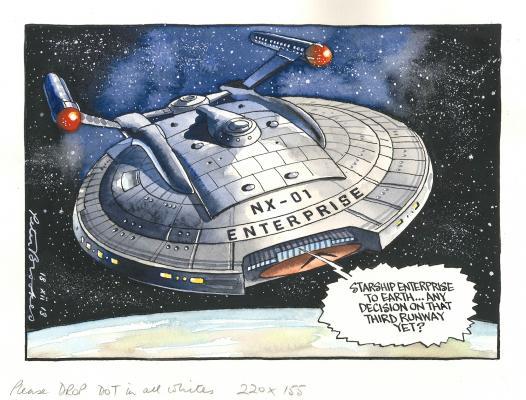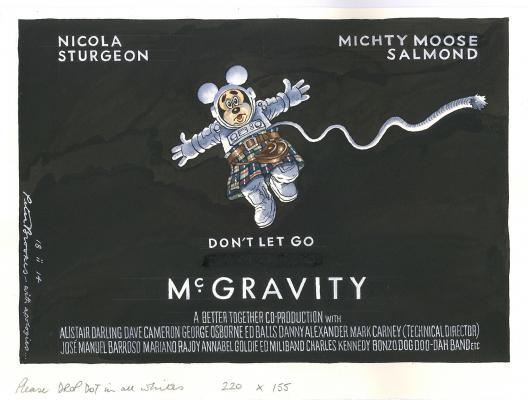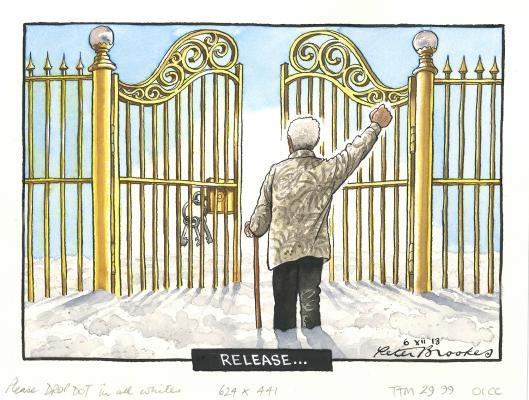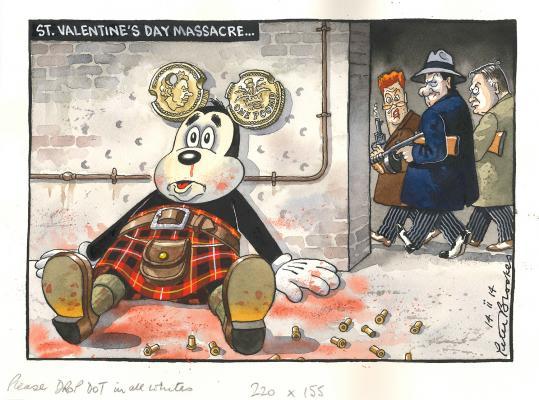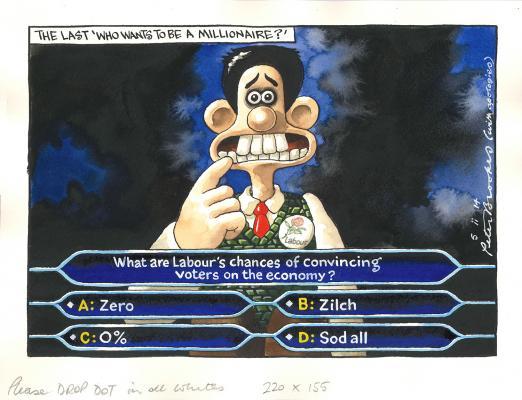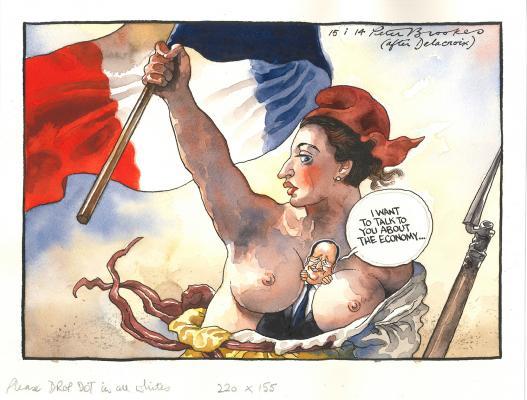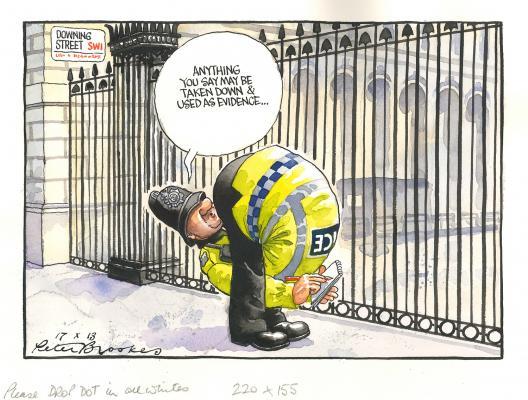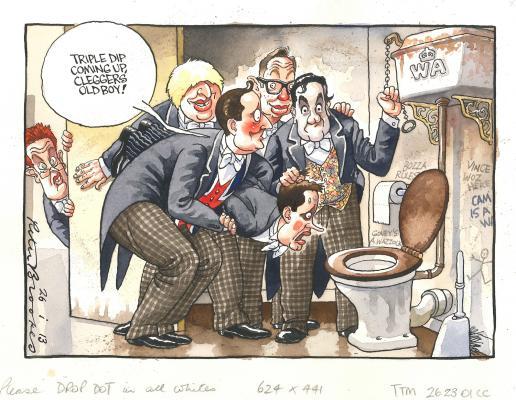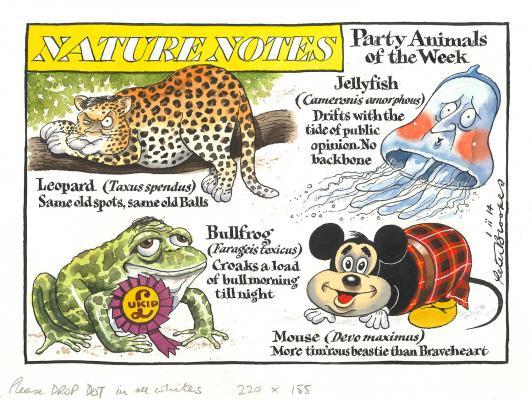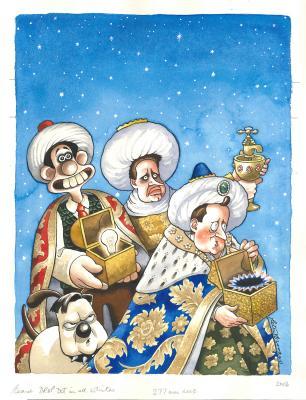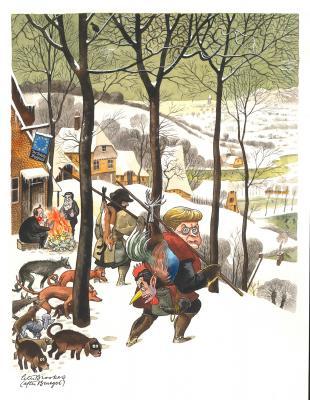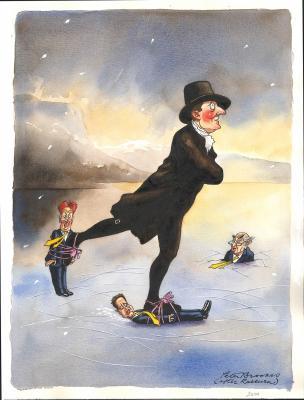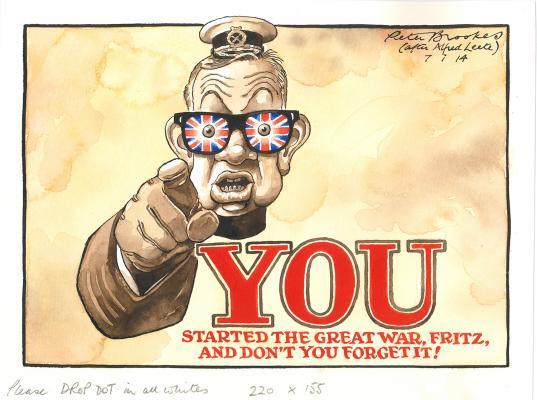
Previous fine art exhibitions
-
Approaches to Abstraction by Jonathan Meuli (19 January to 17 March 2019)
-
Jonathan Meuli is a Glasgow-based painter, trained at the Ruskin School of Art at Oxford, from which he graduated in 1982. The exhibition at Wolfson is a selection of works spanning nearly four decades. Some of Meuli’s most important abstract studies in watercolour or gouache as well as a number of significant oil paintings are on show, many for the first time. The goal of this exhibition is to trace the origins of Meuli’s profound interest in abstraction and the routes through which the artist has come to produce his current large, chromatically intense, abstract oil paintings. Meuli’s wide-ranging interests in other art-forms, such as opera and dance, poetry and prose, are often evident in his paintings. For the past four years, he has developed large, often turbulent, oil paintings which have a metaphorical connection with scientific research. Other works have a meditative stillness and balance.
- At Your Service
Mark Corfield-Moore (2 October to 16 December 2018) -
We are delighted to present works by Mark Corfield-Moore, the first winner of The Wolfson College Cambridge – Royal Academy Schools Graduate Prize. The prize is awarded annually to an outstanding graduate of the RA Schools and is designed to provide emerging artists with a significant exhibition at a crucial point in their careers. Their work, in turn, plays a critical role in fostering meaningful connections between the arts and other disciplines both within the University and beyond.
Mark Corfield-Moore’s exhibition, ‘At Your Service’, will be on view until 16 December 2018. His multi-media works respond directly to the environment of the College, particularly the challenge of exhibiting in a space that is very different, both visually and conceptually, from a contemporary art gallery. All of the works in this show engage with the multipurpose nature of the Combination Room, at once a site for display and a functional space. For Corfield-Moore, the champagne glasses, ashtray, and napkins that feature in these works allude to the experience of service and being served. The meditated complexity of the works captures elements of performance and display that define, for the artist, events such as the typically ‘Oxbridge’ Formal Hall.
- Dance of Light: Living Matter and Rhythm (22 September to 18 November 2018)
-
Stimulated by her immersion in nature, the artist has conjured up the underlying motion of organic growth. In this series, originally called ‘Living Matter in Rhythm’ and painted in 1999 and 2001, Rhea Quien captures energy and light to bring forth subtle shapes. Out of the saturated colour of the background emerge suggestions of translucent insect wings, muscle or bone, flames, wispy clouds or flowing water, while others draw one to imagine apparitions from outer space.
With a particular gift – synaesthesia, which she seems to have inherited from her mother Clara Quien, also a synaesthetic artist – Rhea responds to nature by ‘seeing’ light and shapes which she attempts to capture in her paintings. She says that the process of painting ‘Living Matter in Rhythm’, although challenging at the beginning, was instructive and exciting. “Slowly I learned to trust the process in a spontaneous, yet sensitive way. Turning the so-called ‘finished’ painting upside down and contemplating it, revealed a great deal that might be improved.”
Read more about Rhea Quien and her work on her websites: rq-art.com and rq-lightart.com.
Watch a talk on synaesthesia that Rhea gave at Wolfson College's Lee Hall.
-
Political Satire at Wolfson (1 September to 30 September 2018)
-
This exhibition in the Combination Room features 21 prints by four of the most important satirists of the period – Isaac Cruikshank (1764 -1811), William Heath (1794-1840), Thomas Rowlandson (1756-1827), and Charles Williams (1796-1830). Three subjects dominate the satires: the Duke of York’s affair with Mrs Mary Anne Clarke; George IV’s efforts to divorce Caroline of Brunswick; and Napoleon’s ambitions in Europe. All of the satires are hand-coloured etchings and would have been sold by one of London’s many print publishers. The law features prominently in the prints which provide an overview of political satire produced in Britain during the first quarter of the nineteenth century. The satires are on loan from The Right Honourable Lord Collins of Mapesbury, Fellow of Wolfson since 1975, who was appointed a High Court Judge in 2000 and has also served as Lord Justice of Appeal, Lord of Appeal in Ordinary and, most recently, Justice of the Supreme Court.
This exhibition is curated by Dr Meredith Hale, Fellow, Wolfson College.
- Christopher LeBrun, Dualities
-
Shown for the first time at Wolfson College, this new series of paintings is a continuation from Christopher Le Brun's most recent series of prints, Composer, which explores the musical form of distinct yet related movements and the essentially layered structure of both painting and music. Using a unique technique working directly onto the woodcut proofs, these remarkable oil paintings extend Le Brun’s lifelong preoccupation with colour – ‘experiencing rather than seeing’, as he describes it, ‘a property of the world we delight in for itself’ – and testing approaches to the juxtaposition of colour, tone, transparency and form.
The exhibition considers the theme of ‘doubles’ and dualities through a series of remarkable diptych paintings, the result of the artist’s long standing aesthetic, literary and philosophical interest in the idea of ‘the double’ - with parallels in the sciences and across human endeavour and scholarship. For Le Brun, the process of painting itself involves an intrinsic duality: ‘cover and uncover, reveal and hide, this goes to the heart of what painting is and does. It can’t be made without covering, and without reducing the original light of the ground.’ The implications of this approach form a connecting thread throughout Le Brun’s work, whether figurative or non-figurative. Combining two different paintings in a diptych allows Le Brun to ‘dramatise this duality’.
A fully illustrated book, Doubles, published by Ridinghouse accompanies the exhibition. It features an essay on the multi-disciplinary subject of Dualities by the exhibition curator Dr Anna M Dempster.
About the artist
Christopher Le Brun is a painter, sculptor and printmaker. Born in Portsmouth and trained at the Slade and Chelsea Schools of Art in London, he is an internationally acclaimed artist. His work has been exhibited worldwide and can be found in major museum and public collections including those of Tate, London; Museum of Modern Art, New York; British Museum, London; Art Gallery of New South Wales, Sydney; Metropolitan Museum of Art, New York; Victoria & Albert Museum, London; Scottish National Gallery of Modern Art, Edinburgh; The Whitworth, Manchester and Yale Center for British Art, New Haven amongst many others, as well as in leading private and corporate collections nationally and internationally.
Contributing his ideas and expertise to the direction of a number of the United Kingdom’s leading arts organisations, and leading them through times of growth and change, Le Brun served as a Trustee of Tate 1990-1995, The National Gallery 1996-2003 and Dulwich Picture Gallery 2000-2005. He was a Founding Trustee of the Royal Drawing School between 2000-2016 and is currently a Trustee of the National Portrait Gallery, Since 2011 Christopher Le Brun has been President of the Royal Academy of Arts, London. the 26th President since Sir Joshua Reynolds and the youngest since Lord Leighton, in 1878. He has overseen the Royal Academy at a time of extraordinary innovation and growth, including in education, and guiding it to its 250th anniversary year in 2018.
This exhibition is curated by Dr Anna M. Dempster, Head of Academic Programmes at the Royal Academy of Arts in London, and College Research Associate, Wolfson College
- Political Satire at Wolfson (20 January to 6 May 2018)
-
This exhibition in the Combination Room featured 21 prints by four of the most important satirists of the period – Isaac Cruikshank (1764 -1811), William Heath (1794-1840), Thomas Rowlandson (1756-1827), and Charles Williams (1796-1830). Three subjects dominate the satires: the Duke of York’s affair with Mrs Mary Anne Clarke; George IV’s efforts to divorce Caroline of Brunswick; and Napoleon’s ambitions in Europe. All of the satires are hand-coloured etchings and would have been sold by one of London’s many print publishers.
The law features prominently in the prints which provide an overview of political satire produced in Britain during the first quarter of the nineteenth century. The satires are on loan from The Right Honourable Lord Collins of Mapesbury, Fellow of Wolfson since 1975, who was appointed a High Court Judge in 2000 and has also served as Lord Justice of Appeal, Lord of Appeal in Ordinary and, most recently, Justice of the Supreme Court.
- Wolfson Places 2017 (14 April to 6 May 2018)
-
Wolfson Places 2017 is an exhibition of a selection of the photographs submitted by College members to the competition of this name run in the Michaelmas term of this year. It includes the winner, runners-up, highly commended entries and a selection of other images taken around the College.
- Illuminated Movement (14 April to 6 May 2018)
-
An exhibition of dance images by Henryk Hetflaisz (b.1978) a Polish-born photographic artist, working in London
Hetflaisz is pre-occupied “with finding a way to set movement free using a medium that traditionally ‘captures’ motion. Imagine”, he says, “that the dancer’s body is a paint brush and the photographic paper is the canvas. First, I paint the bodies of my dance collaborators. Then, they dance expressively in near darkness, while I take a series of long exposures.”
The result is the magical, ethereal bodies that emerge from an incandescence of light against a black background in these photographs. What is important is that “in an age of digital manipulation, […] these images are the result of direct photographic exposure. No digital trickery interferes with the alchemy of photons propelled into movement.”
- The Diasporic Brush: Modern Singaporean Art (20 January to 1 April 2018)
-
This exhibition combined paintings from the Lee Seng Tee Collection of Wolfson College with the works of six young artists of the Siaw-Tao Chinese Seal-Carving, Calligraphy and Painting Society. The exhibition explored changing meanings of ink and identity in Singapore. The term ‘diaspora’ may be dated, but Sinophone scholars such as Shih Shu-mei have contended that participating in cultural projections forms a link with China that maintains a sort of diasporas identity. In a medium with as much cultural baggage as Chinese ink, successive generations of Singaporean artists had done just that, resolving a dialectic between citizenship and diaspora. This exhibition presented the Nanyang flavour of Singaporean Modern Art in this light, with the Nanyangs of two generations put into sharp contrast.
Wolfson Fine Arts presented this exhibition in association with The Siaw-Tao Chinese Seal-Carving, Calligraphy and Painting Society, and acknowledges the support of Leicestershire County Council for the loan of Paysage Chinois by Cheong Soo Pieng from their permanent Collection.
- Representing Partition: India and Pakistan (14 October to 9 December, 2017)
-
Falling in the 70th year since India and Pakistan were rendered independent nation states, the series will explore the visual character of this moment, and understand how visual culture was used to facilitate, and articulate this transformation for global audiences.
The show offers an original contribution to understanding the visual significance of Partition and includes sketches made at the precise moment of the hand-over in 1947, photojournalism and illustrated adverts. Bringing together loans from the Imperial War Museum, London Library, Royal Academy, Centre of South Asian Studies and Royal Asiatic Society for the first time, the exhibition is an opportunity to experience the political use of representation during this challenging process. In parallel an exhibition of the work of contemporary Kashmiri artist Prashast Kachru examines the impact of this critical moment.
- Richard Sorrell (27 May to 24 September 2017)
-
Richard Sorrell (b.1948) is a painter of invented people ‘doing things’. He works in oil, acrylic and watercolour. His career started as a predominantly landscape, portrait and still-life painter – by instinct a draughtsman, and interested in the appearance of things, particularly plants and animals – an objective painter. His subjective painting – the invented compositions – have come to greater prominence since the 1990s.
- A Woman’s Skin: Eileen Cooper RA (6 May to 24 September 2017)
-
A selection of paintings, collages and bronzes, including works specially made for the exhibition, by Eileen Cooper OBE RA, Keeper of the Royal Academy Schools since 2010. Eileen Cooper trained at Goldsmiths College and the Royal College of Art. Her works can be found in museums, galleries and private collections from Birmingham and Manchester to Nuremberg and New Haven. Cooper became a Royal Academician in 2000 and in 2010 was elected Keeper of the Royal Academy of Arts, the first woman to hold the post since the Academy's foundation in 1768. As Keeper she is responsible for guiding the next generation of artists admitted to the Royal Academy Schools, the oldest established art school in Britain.
- Valley of Vision (21 January to 16 April 2017)
-
Works depicting the vibrant industrial mining culture of the Rhondda Valley by George Chapman, Josef Herman, Ernest Zobole, Jack Crabtree, Nicholas Evans and others. Kim Howells, former Welsh Labour Party MP for Pontypridd, gave an engaging talk to mark the opening of the exhibition - read the text here. Read more in the brochure.
- Counterpoints - Contemporary Russian Art at Wolfson College (9 October 2016 to 19 February 2017)
-
Showcasing the dynamic work of Alexei Lantsev, a graduate member of the Moscow Artists' Union. The exhibition featured many works that were created especially for the space. Read more in the brochure.
- Reimagining the City - Kettle's Yard in new places and spaces (29 October 2016 to 8 January 2017)
-
Celebrating 50 years as part of the University of Cambridge - Reimagining the City brought together works from the Kettle's Yard Collection that captured artists’ interpretations of the city, both real and imaginary cities that spanned several decades. As well as artworks by modern European and British artists such as Christopher Wood and Ben Nicholson, the exhibition contained an example of the glassware that Jim Ede collected that is usually displayed in the Kettle’s Yard house, providing an imaginative interpretation of the city through the eyes of Ede, after he described it as appearing to him to be like ‘a golden city’. Curated by Kyle Percy, Kettle’s Yard
- Founders, Presidents, Benefactors and Personalities (1 March to 30 September 2016)
-
Works from the College's own art collection that represented some of the key people involved in the founding and ongoing development of the College.
-
Pottery in the Bernard Leach Tradition (1 March to 30 September 2016)
-
The jugs, caddies and vases from the Bradshaw-Bubier collection. All the potters represented worked for part of their career at the St Ives Pottery in Cornwall, which was founded by Bernard Leach and Shoji Hamada in 1920.
- Ramsay Ong: A selection of Batik Orchid Paintings from the Lee Collection (1 May to 30 September 2016)
-
An award-winning batik artist from Sarawak, Ramsay Ong had originally trained as a draughtsman, but decided to work in batik in the 1970s. These orchid paintings date from that time and demonstrate his achievement of rich textures and three-dimensionality. The paintings were purchased by Dr Lee Seng Tee and they form part of a collection of 55 paintings that Dr Lee donated to Wolfson College in 1992. Further small exhibitions of parts of the Lee Collection will follow.
-
Kate Green: Where Do Ideas Come From (16 January to 20 March 2016)
-
In the mixed-media works Kate Green chose for this exhibition, she explores the language of childhood; the stitched pieces contain elements of silence and are about the need to re-create stillness and beauty in her life. As stillness has grown within her, Kate's language has become more direct and speedy. Her watercolours reflect this development.
- Henry Moore and Photography (9 October 2015 to 28 February 2016)
-
The exhibition considered the little-examined subject of the role of photography in Henry Moore’s creative process. A selection of 20 photographs from The Henry Moore Foundation Archive and two maquettes for monumental works, Three Standing Figures (1945) and Reclining Figure (1969), explored Moore’s use of photography to study light, texture and form and to help site his large-scale sculptures.
- The Royal Academy at Wolfson (31 January to 19 December 2015)
-
A rotating exhibition of Royal Academicians, curated by Honorary Fellow Anthony Green RA, included paintings, prints and drawings, all of which had been lent to the College by the artists. Many works had never been exhibited before. An illustrated leaflet (pdf) accompanied the exhibition.
- Richard Deacon: This is where ideas come from (July to September 2015)
-
An informative and beautifully crafted catalogue was produced for this exhibition. At the official launch event on 16 July the exhibition's curator, Phillip Lindley, discussed the show with the sculptor.
- Ben Levene RA: a retrospective (November 2014 to January 2015)
-
Ben Levene (1938–2010) was a master of still life, which he saw as an art form within an art form, the recreation within a painted composition of a selection and arrangement of real objects combined with abstract design. He taught generations of artists from 1963 until 1998 at Camberwell School of Art, the Royal Academy Schools and as a tutor for City and Guilds. He served as curator in the Royal Academy Schools from 1995 and exhibited regularly throughout the UK and abroad.
- Bredon House: the first 100 years (April 2014 to January 2015)
-
In 1965, this College was founded by the University of Cambridge with a single building, Bredon House, which has been at the heart of the College since its earliest days, and remains central to the College as it is today, and to its future.The house was built in 1914 for John Stanley Gardiner (1872-1946), Professor of Zoology, and he and his family lived there until his death in 1946, when it passed to the University under the terms of his will.
- Myths, Memories & Mysteries - how artists respond to the past (June to November 2014)
-
This exhibition by a group of contemporary Greek, Australian, British and Chinese artists explored the influence of the past upon artists' work. The exhibition and related activities were shared across two venues: Wolfson College and the Museum of Classical Archaeology.
- Wolfson Gardens through the Lens (Lent and Easter 2014)
-
Twelve photographs by Head Gardener, Phil Stigwood, display the beauty of the College Gardens through the seasons as seen by one who knows them best
- Collaboration: the Print Studio and Kip Gresham (Michaelmas 2013)
-
Twenty-six prints by a range of contemporary artists, each a collaborative work between the artist and members of the Print Studio. The exhibition was accompanied by a discussion with Kip Gresham of the Print Studio.
- Edward Bawden (Summer 2013)
-
Nine linocuts of Aesop's Fables were on loan from Fry Art Gallery, Saffron Walden throughout the summer.
- Anthony Green RA (Easter 2013)
-
Unusual paintings and prints by the distinguished realist painter and printmaker Anthony Green RA, curated by Senior Member Frank Whitford with generous assistance of the artist.
- Coast (Lent 2013)
-
Photographic prints by John Naughton, Jane Goodall and Jane Stockdale. A workshop on how to take better landscape photographs was run by Jane Goodall.
- London Markets (Michaelmas 2012)
-
Edward Bawden CBE RA was commissioned by Herbert Simon, Managing Director of the Curwen Press, to produce a series of six London Markets as limited editions in 1967, to be printed by the Curwen Studio, then based just off Tottenham Court Road in London.
- Edward Bawden (The first art exhibition in the Gallery)
-
Fry Art Gallery Saffron Walden is generously lending six scenes of London Markets by Edward Bawden to the College for its first exhibition being held during the Michaelmas Term 2012.
Edward Bawden CBE RA was commissioned by Herbert Simon, Managing Director of the Curwen Press, to produce a series of six London Markets as limited editions in 1967, to be printed by the Curwen Studio, then based just off Tottenham Court Road in London. The Curwen Press had engaged Bawden to work for them on many projects since the early 1920s, producing a wide range of images for advertisements, book-jackets, wallpapers and pattern papers.
The prints of Covent Garden Fruit Market, Covent Garden Flower Market, Billingsgate, Borough, Leadenhall and Smithfield Markets were originated as linocuts which were then made into lithographic plates by Stanley Jones. The main edition was seventy-five copies of each.
Bawden would travel down to London from Great Bardfield very early in the morning with the local butcher. Bawden's long-term interest in the structural detail of large-span working buildings, evident in his depictions of railway stations and other structures, is also expressed in these prints, juxtaposed against the human activity and the market produce.
The Peter Brookes Gallery
Peter Brookes is political cartoonist on The Times. He describes the daily anxiety of the political cartoonist as the deadline approaches, “The Idea behind the cartoon is the tricky bit and what I wrestle with for the best part of the day”. The drawing he describes as “just mechanics!” The cartoons in this Gallery are all topical and date from 2010-2014.
Brookes’ awards include British Press Awards Cartoonist of the Year 2002, 2007, 2010, 2011, 2012; What the Papers Say Cartoonist of the Year 2005; Political Cartoon Society Cartoonist of the Year 2006, 2009, 2011; and five Cartoon Art Trust Cartoonist of the Year awards. We were privileged to have the originals on show in the exhibition in May 2014.

